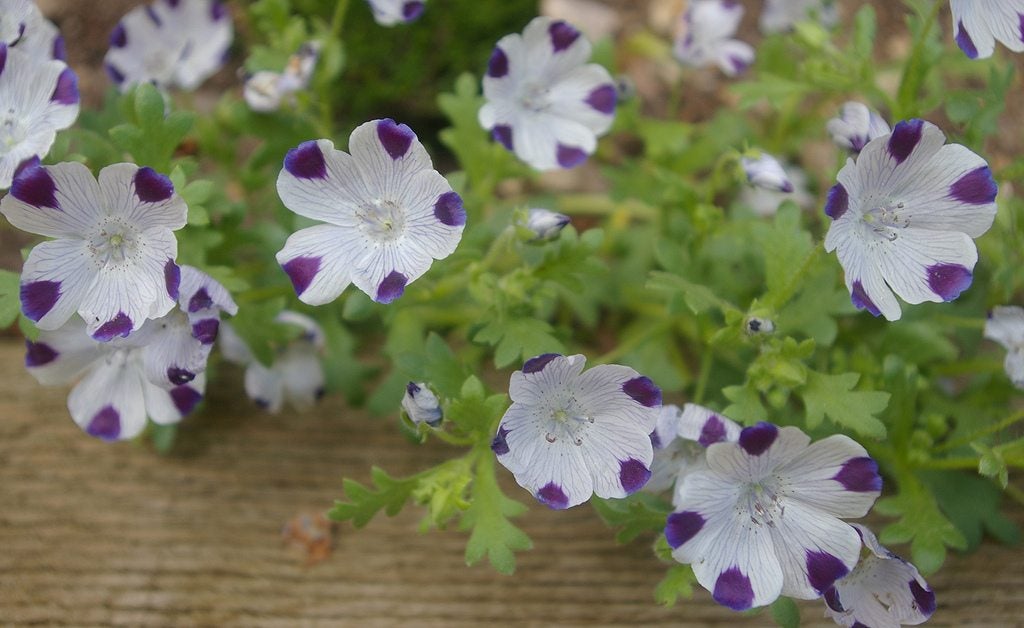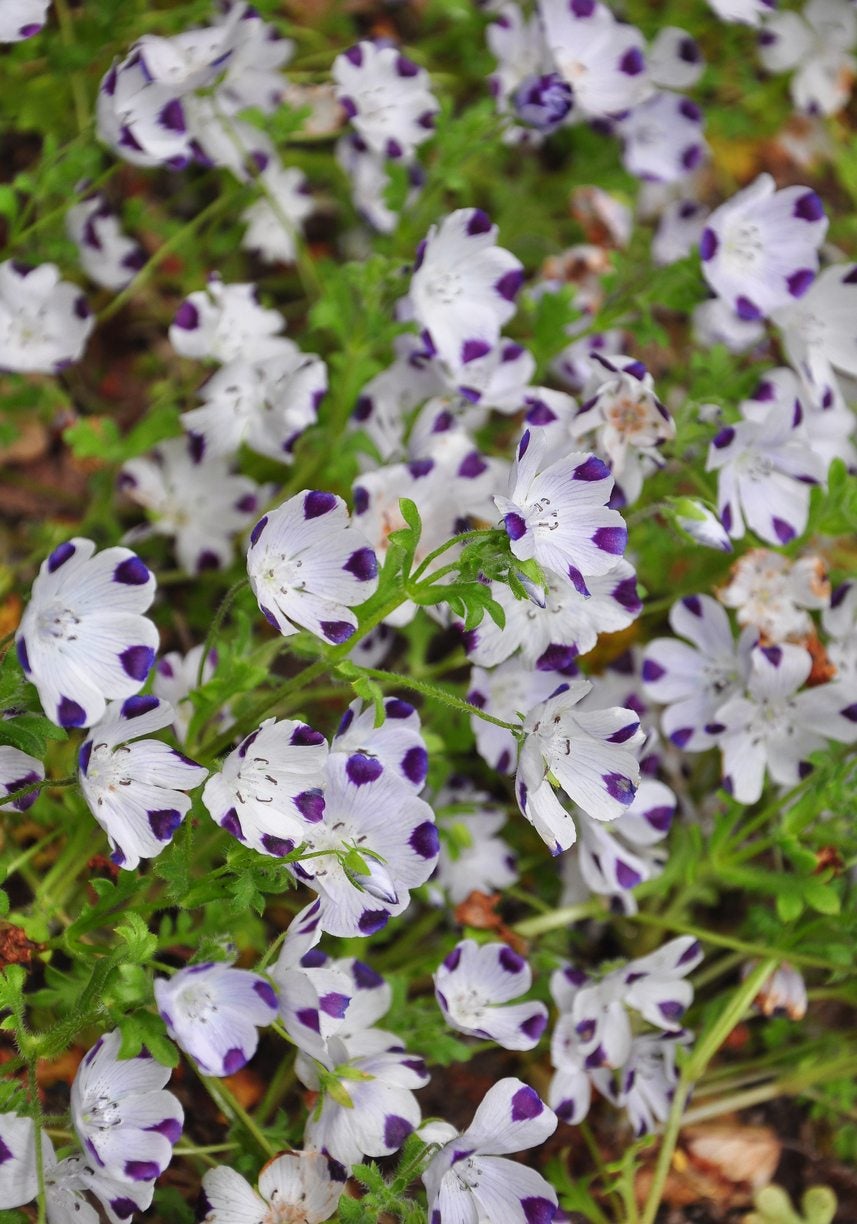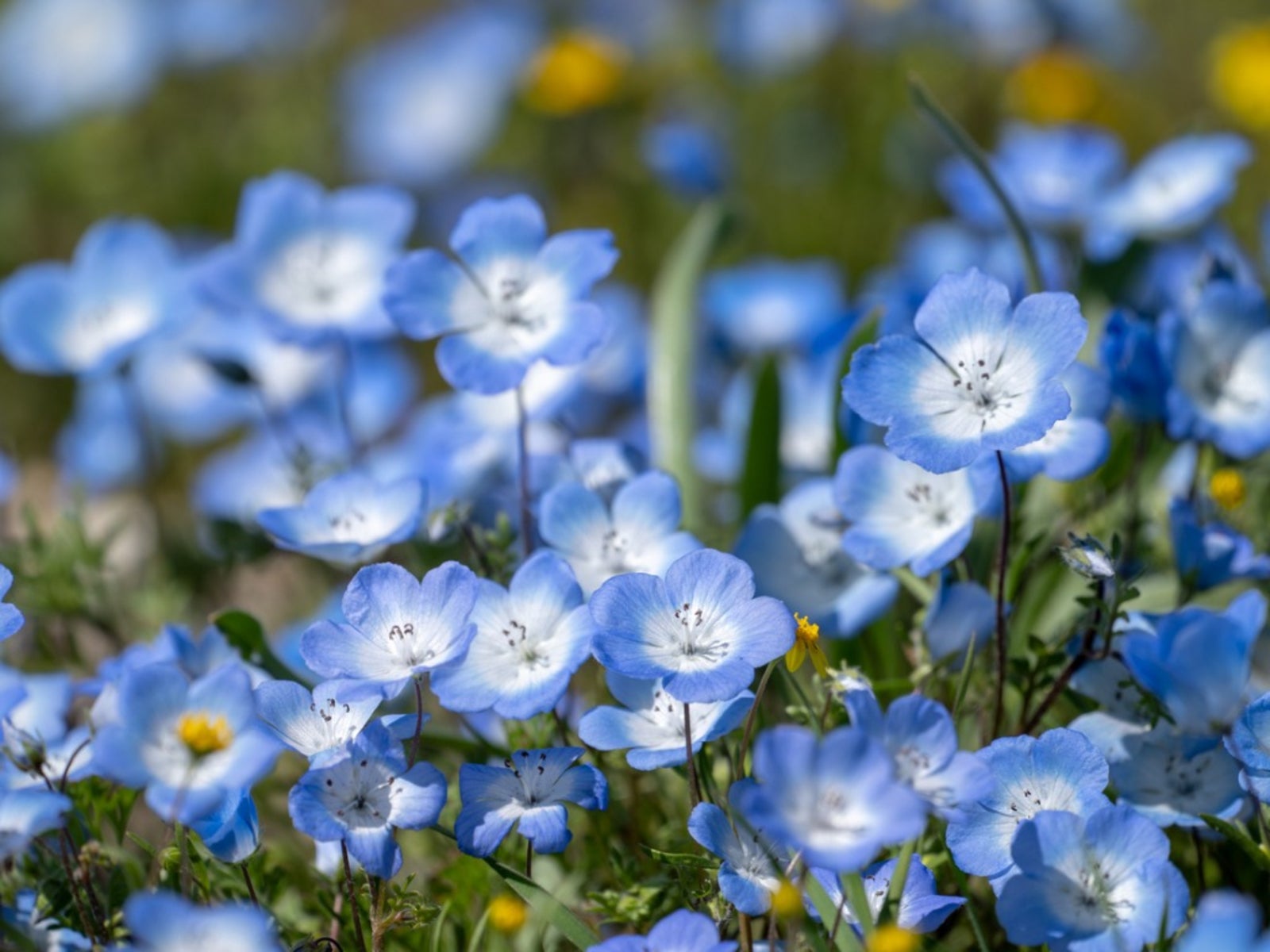Growing Five Spot In Containers – Tips For Keeping Five Spot In A Pot


Five spot is a North American native annual. It produces lovely, white blooms with striped petals tipped by blue dots. Also called calico flower or baby blue eyes, growing five spot in a pot provides a beautiful backdrop for taller plants. Combine it with perennials, other annuals, or ornamental grasses and foliage plants. Container grown five spot plants may even act as a perennial due to its prolific self-seeding.
About Five Spot in Containers
Rarely getting more than 8 inches (20.5 cm.) tall, five spot is ideal around the edges of containers. Its genus name, Nemophila, means 'shade lover,' making these pretty flowers perfect in low light situations. They also do well in areas with bright but indirect sunlight. Combining other native plants with potted baby blue eyes eases care and encourages local flora. Potted baby blue eyes have dainty 1-inch (2.5 cm.) flowers and delicate foliage. The plants are endemic to California and grow best in temperatures of 60 to 70 degrees Fahrenheit (15 to 21 C.). In hot regions, they should be grown in partial shade. The low growing plant works perfectly as a ground cover or border plant. It will even dangle delightfully in hanging baskets. These plants perform best in moist soil with plenty of compost added. Sow five spot in a pot directly or start indoors 6 weeks before the last expected frost.
How to Grow Baby Blue Eyes in a Container
Select a pot with several drainage holes. It doesn't have to be particularly deep, as five spot has shallow root growth. Use a good potting soil with plenty of organic matter or make your own with a half and half mixture of garden soil and compost. When five spot in containers is directly sown, seeds may take 7 to 21 days to germinate. Keep the soil moist but not soggy. If combining the plants with others, use the indoor start method so plants have enough roots to compete with other species. Choose plants that also like the same lighting and have similar water needs to simplify care of container grown five spot.
Care of Five Spot in a Pot
Baby blue eyes in a container are remarkably self-sufficient. Provide them enough water to keep the top few inches (7.5 cm.) moist. The flowers are attractive to native bees which are their only pollinator. Avoid using pesticides near the plants to prevent harm to these valuable insects. If pest issues arise, spray plants with horticultural soap or use light blasts of water to wash off soft bodied insects. Deadhead to promote flowering. For even more flowers, fertilize every 6 to 8 weeks. Allow plants to die back in fall and let some flowers go to seed for a return performance the next warm season.
Gardening tips, videos, info and more delivered right to your inbox!
Sign up for the Gardening Know How newsletter today and receive a free copy of our e-book "How to Grow Delicious Tomatoes".

Bonnie Grant is a professional landscaper with a Certification in Urban Gardening. She has been gardening and writing for 15 years. A former professional chef, she has a passion for edible landscaping.
-
 Looking For Plants To Give You The Soft And Fuzzies? Try These 5 Fuzzy Leaf Plant Options
Looking For Plants To Give You The Soft And Fuzzies? Try These 5 Fuzzy Leaf Plant OptionsLovers of texture, drama, silver foliage and tactile plants will adore these special sensory garden additions. These fuzzy leaf plant options will leave you all aglow
By Susan Albert
-
 Get Ready For A Summer Of Hummers! Grow These Full Sun Hummingbird Plants and Flowers
Get Ready For A Summer Of Hummers! Grow These Full Sun Hummingbird Plants and FlowersIf you’re lucky enough to enjoy a sunny backyard, make sure you are maxing out on your pollinator opportunities and grow these full sun hummingbird plants and flowers
By Tonya Barnett
-
 Five Spot Seed Propagation – Growing Baby Blue Eyes From Seeds
Five Spot Seed Propagation – Growing Baby Blue Eyes From SeedsFive spot annuals develop into low growing plants adorned with white flowers whose petal tips have been dipped in bright blue. They are propagated by seed and will self-sow at the end of the season. Find out when to plant five spot seeds and how to care for them here.
By Bonnie L. Grant
-
 Baby Blue Eyes Plant - Growing And Caring For Baby Blue Eyes
Baby Blue Eyes Plant - Growing And Caring For Baby Blue EyesLearn how to grow baby blue eyes for a spectacular display of soft blue or white flowers that attract important garden pollinators. You can find baby blue eyes flower information in this article.
By Bonnie L. Grant